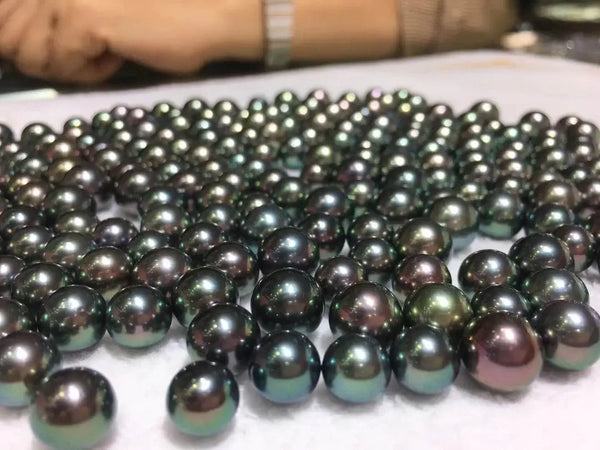
Q: Pearls have always been a timeless classic, admired throughout history. What do you think is the secret behind their enduring success?
A: It's hard to recall a time when pearls weren't in fashion. Today, they're everywhere, from everyday accessories to the runway. However, it’s important to distinguish between the pearls used in trendy accessories and those found in high jewelry collections. The surge in popularity on the fashion scene has actually shifted the perception of high quality, collectible pearls, which were once seen as traditional and conservative. Now, they’re viewed with a more modern, versatile appeal that blends classic elegance with contemporary fashion.

Q: It seems that wearing pearls often brings the fear of looking too formal or overdressed. Why is that?
A: That's a very common concern, but it's actually unfounded. Many people associate pearls with a specific image—like Jacqueline Kennedy in her Chanel suit with a pearl strand, reminiscent of our grandmothers’ style. But pearls offer so many more possibilities! The length, size, or even the shade of pearls can drastically alter the look. For instance, in Japan, there's a tradition of choosing pearls based on a woman's age. Young girls are often gifted delicate, small akoya pearls as their first strand, while women opt for larger ones. Pearls can even have a bold or sexy look—for example, when styled in a long, elegant sautoir.

Q: While pearls have always been seen as a symbol of innocence, is that all they represent?
A: Historically, yes, pearls have symbolized innocence, and it's a tradition for brides to wear them on their wedding day. But when Mikimoto made pearls more accessible, they became popular in bohemian circles as well. Long strands of pearls, in particular, developed a new reputation that extended beyond innocence. Pearls also carry a “royal provenance,” which instantly adds an air of aristocracy and refined luxury to any outfit. When Angelina Jolie transitioned from her “bad girl” image to the sophisticated diva we know today, her image consultants made pearls a key part of her transformation.

Q: Does this refined look work with all pearls or just classic white ones?
A: Any high-quality pearls can create that refined look, regardless of their color. It’s the quality and craftsmanship that truly matter.
Q: Which pearls are the most expensive?
A: The most expensive pearls are those that are in short supply and highly sought after. These include Tahitian pearls with the rare peacock color—a mix of green and pink. Tahitian bronze pearls with a chocolate overtone are also highly prized, as are the rich golden pearls from the Philippines and the silvery-pink pearls from Australia. These colors are rare, making them some of the most valuable on the market.
Q: What kind of pearls are more common on the market now – natural or cultured?
A: It's impossible to compare the natural pearl market with the cultured pearl market because there’s almost no natural pearl market left today. Natural pearls are still harvested in small quantities in the Persian Gulf, but these are sold domestically and very rarely reach the international market. You may also find natural pearls from before the 1940s sold at auctions. However, the majority of pearls available today are cultured, a market that’s been thriving for over 120 years. Cultured pearls are not a product of a controlled lab process like synthetic gemstones. They're the result of a natural biological process, much like natural pearls. About 50% of pearl oyster shells die at the very first stage - when the nucleus is implanted, another third of the remaining ones are not able to cover the nucleus with nacre. In fact, only a tiny percentage of molluscs will grow pearls of jewelry quality.

Q: Is there a significant difference between natural and cultured pearls?
A: You can think of the pearl market like the art market. Cultured pearls are akin to contemporary art—created in the last few decades and still being produced today. Natural pearls, on the other hand, are like classical art masterpieces from the early 20th century. Just as with modern art, there are peaks in the cultured pearl market, with some pieces fetching millions and becoming collectors’ items. Natural pearls, much like classical art, are incredibly rare and valuable simply because of their age and scarcity. Cultured pearls that reach similar prices do so because of their craftsmanship and the demand they command, similar to how modern artists achieve recognition.
Q: Can pearls be a good investment?
A: I wouldn’t recommend viewing pearls purely as a financial investment. Pearls are first and foremost objects of beauty and artistry. Like any collectible, their artistic value is paramount, and only secondarily do they hold financial worth.

